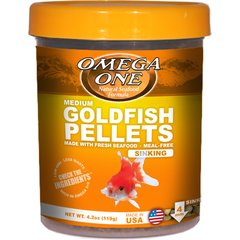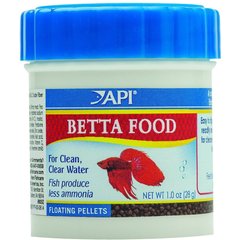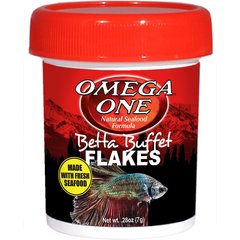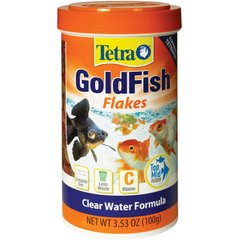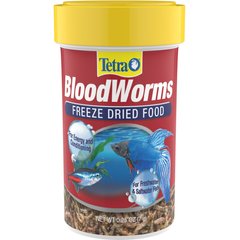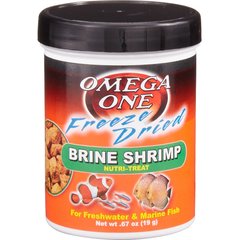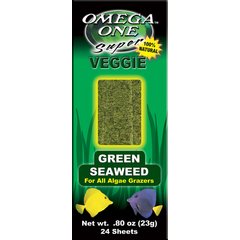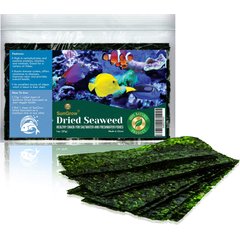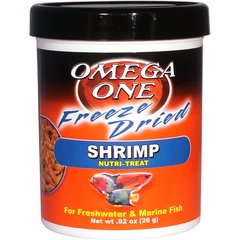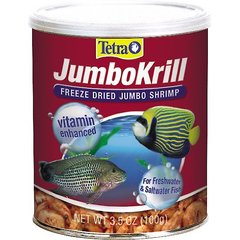What Do Fish Eat? Your Guide To Feeding Pet Fish
vgajic/E+ via Getty Images
When caring for pet fish, diet is one of the most important aspects of your fish’s health. But what do fish eat as pets, exactly?
Whether you’re a new fish pet parent or a fish enthusiast, this guide will help you make informed choices for your underwater companions.
Key Takeaways
- A balanced diet with appropriate protein, fat, carbohydrates, vitamins, and minerals is essential for fish health.
- Overfeeding can lead to serious health issues like obesity, swim bladder disease, and poor water quality.
- Pelleted diets are more nutrient-stable than flakes, but options like flakes, freeze-dried, frozen, and live food can complement the diet.
- Always choose food appropriate for the fish’s species, age, and health needs.
What Do Fish Need in Their Diet?
Fish require the following nutrients in their diet:
- Protein
- Fat
- Carbohydrates
- Vitamins and minerals
Protein
One of the most important components in fish food is protein. Protein is needed to help support a fish’s:
-
Growth
-
Body tissue maintenance and repair
-
Immune health
-
Energy
Herbivore fish need about 35–45% protein content in their food and carnivores need about 40–55% protein.
Fish food protein must contain all essential amino acids that the fish needs to survive. The best source of protein for fish is animal protein such as fish meal. Soy is the best plant protein option, but it does not contain all essential amino acids a fish needs to survive.
Fat
Fat is also required for energy, as well as hormone production and insulation. Fat should make up 15–25% of your fish’s diet.
Fish oil is the best source of fat in fish food.
Carbohydrates and Fiber
Carbohydrates are also required for energy. Think of all the swimming fish do in a day! Carbs should typically make up 25–40% of the diet for omnivore fish and less than 20% for carnivores.
Peas, beans, yeast, and nuts are great sources of carbohydrates.
Fiber content should typically make up less than 5% in most fish diets. Fiber is important for intestinal health, motility, and inhibiting inflammation in the intestines.
Vitamins and Minerals
Pet fish, just like people, require vitamins in their diet, including vitamins A, C, D, E, and K. Poor vitamin absorption in fish can lead to decreased immune function and skeletal deformities.
Vitamins may be listed on fish food packaging individually or as a “vitamin mix.” Minerals, on the other hand, are listed on packaging as “ash.” Ash is made from the bones, scales, and shells that are high in calcium and phosphorus.
Fish Food Pellets
Food pellets for fish are solid, compact, compressed food material that is typically cylindrical in shape. They come in different varieties, such as floating or sinking pellets.
Pellets can maintain stable vitamins longer than fish flakes, which will lose up to 90% of their vitamins within 30 seconds in water. So if your fish’s mouth is large enough to fit a pellet, feed them pellets.
Micro pellets are great for smaller fish and most tropical fish. Betta fish, goldfish, and koi fish all eat pellets.
Feed your fish as much as they can consume within a two- to five-minute period.
Fish Food Flakes
Flaked fish food is very thin, light, and floats on the water surface before sinking. It’s fed by sprinkling it on top of the tank.
Fish food flakes are a good option to supplement with pellets for tropical fish. Smaller fish like tetras, young goldfish, or guppies will also eat flakes.
Because fish can overeat—and the flakes can alter the water quality—only sprinkle enough flakes that the fish can consume within two to five minutes.
Live, Freeze-Dried, and Frozen Fish Food
Live, freeze-dried, and frozen fish food should ideally only be fed to complement a pelleted diet, and not as a sole food option unless instructed by your veterinarian. These food items are not nutritionally complete for your fish. If fed alone it will lead to vitamin and mineral deficiencies that can cause illnesses, decreased growth, and even death.
-
Live fish food, like bloodworms and brine shrimp, are great for small fish, picky eaters, and sick fish that are not eating well. However, feeding live food to healthy fish can start to make them picky and less apt to eat their balanced flakes and pelleted diet. Ideally, only use live fish food as a last resort for a fish who is not eating.
-
Freeze-dried food often contains dried krill or Daphnia, making for a crunchy treat for your fish.
-
This type of food is typically fed to smaller fish, like tetras or cichlids (the product packaging typically mentions which fish it’s best for, so take a look at the recommendations).
-
Only offer freeze-dried or frozen treats one or two times a week if the enclosure is at the appropriate temperature of at least 65 F. Fish are unable to properly digest food in lower temperatures and the food could rot in their digestive system.
-
-
Frozen fish food is protein-rich and can be fed to almost all fish (you can find specifications of the packaging for carnivores, herbivores, freshwater, and saltwater fish). Because frozen fish food is typically stored in cubes, it’s helpful to cut them up first before feeding.
How To Choose the Best Fish Food
When looking for fish food, your veterinarian can help choose the best food, but in general it’s important to feed a diet based on:
-
Type of fish: Carnivore fish (meat eaters) require different amounts of protein than herbivore fish (plant eater). Follow the guidelines of protein percentage based on the type of fish you have.
-
Age of fish: Younger fish typically need more protein while they are growing.
-
Medical conditions: If your fish is a bit overweight, for example, feeding a lower carbohydrate diet can help. If you need a medicated feed for your fish, obtain a prescription from your fish veterinarian. Do your research to find the best fish vet in your area.
-
Season/temperature, if your fish are outside in ponds: Do not feed pond fish if the water temperature is below 55 F, because the fish will be unable to metabolize and break down the food at this temperature.
Your fish’s food should include vitamins A, C, D, E, and K in the ingredient list. Diets that have additional protein supplements like amino acids in the ingredient list can indicate a poor protein source and therefore a poor-quality food.
How Often Should You Feed Fish?
Fish should be fed once or twice daily depending on the fish species.
A good rule of thumb is to feed as much food that a fish can eat within two to five minutes and remove any uneaten food right away.
Keeping a set feeding schedule helps with your fish’s circadian rhythm (wake/sleep cycle), minimizes stress, and creates a time for bonding that your fish anticipates.
Improper feeding of fish can lead to:
-
Obesity
-
Constipation
-
Poor water quality
Can Fish Have Treats?
Yes, pet fish can have treats occasionally. Feeding fish treats is a great way to add enrichment to your tank, but they should not be the main source of food.
Suitable treats for fish may include:
-
Freeze dried bloodworms
-
Brine shrimp
-
De-shelled peas
-
Lettuce
-
Oranges
-
Watermelon
-
Squash
-
Algae wafers
Feeding Pet Fish FAQs
What do goldfish eat?
Goldfish are omnivores so they eat both plants and animals. Goldfish will eat both sinking and floating pellets. Goldfish with buoyancy disorders will need a sinking pelleted diet.
What do koi fish eat?
Koi fish are omnivorous and eat a maintenance pelleted diet with lower protein when pond temperatures are below 65 F. They can eat a higher protein food in temperatures above 65 F.
Fish that are used for shows/breeding often have added carotenoids in their food to improve bright coloration.
What do betta fish eat?
Betta fish are omnivorous. They do great on a pelleted diet with a variety of treats like frozen fish food, freeze-dried, fresh proteins, or vegetables.

